By John Stapleton
Truthfulness, Compassion, Forbearance
“When two truths meet the most courageous one wins.” Chinese proverb.
This piece was originally written some 20 years ago and is republished here out of curiosity.
Falun Gong remain a powerful if essentially invisible force to this day.
In the years since Falun Gong was launched in 1992 it has attracted millions of followers in more than 60 different countries. As evidenced by the crackdown of the Chinese Communist Party, the spiritual practice posed a serious threat to the government of one of the most populous nation on earth.
The number one enemy of the Chinese government, the so-called “evil’’ or “doomsday cult’’ of Falun Dafa or Falun Gong, spread rapidly across Australia in the early part of the millennium.
Outside the Chinese embassy in Canberra and consulates in Perth, Melbourne, Sydney and Brisbane, Falun Dafa adherents sat cross legged in silent daily protests.

In Sydney, unlike in much of the rest of the country, Chinese adherents outnumbered Westerners. In Belmore Park opposite Sydney’s Central Station a group of old Chinese ladies gathered each morning, performing their distinctive Falun Dafa exercises. At Ashfield Park in the west of the city a mix of Westerners and Chinese gathered at dawn. On the weekends at the popular urban precinct of Darling Harbour dozens still join in meditation.
Banned in China, Spreading across Australia

In Queensland, where Falun Dafa was first introduced in 1996, practice sites proliferated from Cairns down to the Gold Coast and west to Toowoomba. In Brisbane the majority of practitioners were Chinese, in the rest of the state mostly westerners.
In Western Australia, where Falun Dafa was introduced in 1998, there were practice sites from the picturesque town of Albany in the south to the northern suburbs of Perth.
The spread of Falun Dafa across Australia mirrored its rapid expansion around the world. It was just as easy to practise Falun Gong in Spanish or French as it was in English or Chinese. Around the globe, as in Australia, it spread outside Chinese ethnic groups.
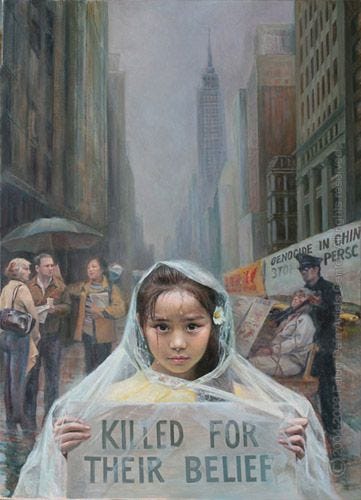
Begun in China in 1992 by Master Li Hongzing, Falun Dafa is probably best understood as being simultaneously a powerful Buddhist sect and a traditional Chinese “qigong” or energy cultivation and meditation exercise.
That is, it is at once a religion and an exercise or meditation program.
Even the most sympathetic of journalists covering the Falun Dafa story around the globe have remarked on their eclectic and sometimes decidedly eccentric beliefs.
Essentially it is a blend of the civic and personal self responsibility of Confucianism, the mysticism of Daoism and the cosmology of Buddhism mixed with animist and magical beliefs.
Plants have souls. You can be reincarnated into a rock. Multi-dimensional universes are taken as a given. There are heavens for different kinds of believers, some with only one advanced soul, others with millions.
Powerful beings appear and disappear at will.
Advanced practitioners can walk through walls and cure the sick.
A Fast Track to Enlightenment
While there is much that is wise, sometimes the teachings appear just plain hallucinatory. Be that as it may, in the early part of the millennium there appeared little doubt we were witnessing the birth of a major new religion. Falun Gong possessed all the prerequisites, a major text, a distributed administrative structure, a devoted following, a spiritual core which spoke to many who believed strongly in its healing powers, a somewhat mysterious and often revered founder, martyrdom through persecution, and a simple, profound message: “Truthfulness, Compassion, Forbearance.”
Such in the most material of senses did not prove to be the case; but no one should underestimate the power of this spiritual provement.

On one level Falun Dafa promises a fast track to enlightenment, to a Buddha-like state of being, through exercises, cultivation and the purification of mind, body and soul.
The secrets of enlightenment, according to Falun Dafa, were previously passed down from master to pupil in remote Himalayan monasteries over thousands of years. They have been made available at this time to the ordinary person, here at the so-called “end of days’’ because we now face the final apocalyptic fall of human civilisation.

On another level, through the physical exercises and improved moral character through concentration on the faith’s precepts of “Truthfulness, Compassion, Forbearance’’ Falun Dafa promises increased mental, spiritual and physical health.
It is the emphasis on good health and the curative character of the practice which Falun Gong practitioners most immediately emphasise.
Characteristically, many look far younger than their actual years. They are happy to tell you stories of miracles, in their own lives and in others.

By the time Falun Dafa was outlawed by the Chinese Communist Party in 1999 its followers numbered in the tens of millions. Each morning practitioners gathered in their hundreds in parks across China.
Thanks to the relentless efforts of Falun Dafa and the vicious brutality of the crackdown, the tortures, the murders and the forced labour camps are now common knowledge and the subject of concern to human rights bodies around the world.
Later estimates suggested that around 2800 died as a result of the crackdown, while hundreds of thousands of others were forced through labour camps.
The practicing of the exercises in a park or even at home anywhere across China provokes immediate arrests. While the world rallied over the issue of apartheid in South Africa, and Australia led the charge on Zimbabwe, Falun Gong evoked no such sympathies.
A rapidly increasing multi-billion dollar trade with China made sure of that.
Humble, not poor
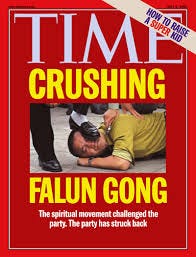
Falun Gong’s numerous internet websites are forbidden in China. Even the mention of the words Falun Gong on the burgeoning number of Chinese blog sites can provoke police attention or are automatically deleted.
Falun Gong practitioners don’t drink, smoke, gamble or take drugs. They believe in improving their moral character through meditation and adherence to the three precepts of their faith, the universal principles of “Truthfulness, Compassion, Forbearance’’.
For this they can be killed.
Women, often elderly, are drawn to the practice in large numbers, partly because of its health benefits.
A nobler time in China’s Past
As harmless and as worthy as its principles might appear, the Chinese Communist Party rightly sensed the most serious threat to their authority they had ever faced.
Falun Dafa regard the communist party as a Western aberration, a moral corruption on the noble history of Chinese civilisation. It is not a de facto pro-democracy movement. Instead they hark back to a nobler time in China’s past.
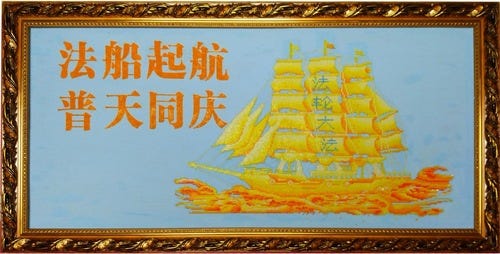
While in its physical exercises Falun Dafa bears a passing resemble to Tai Chi, in its spiritual precepts it resembles millennial sects which have played in an integral part in overthrowing Chinese dynasties and shaping the nature of its government.
White Lotus
As American political scientist Maria Hsia Chang noted in her book Falun Gong: The End of Days, historically Falun Dafa most closely resembles the Buddhist secret society White Lotus, which first emerged in 1360.
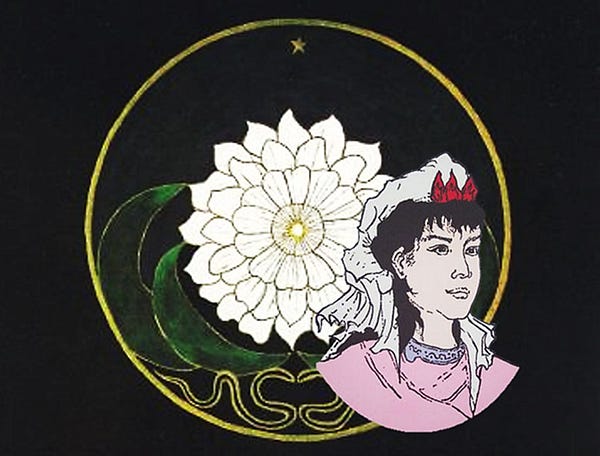
Just as with Falun Dafa, its repression at the hand of the state politicised an essentially religious movement. Its diffuse organisation and powerful belief system made White Lotus instrumental in overthrowing the Yuan dynasty. Pre-existing conditions, including oppressive state control and a largely disaffected population, mirrored the present day.
Chang wrote: “Since 209 BC, when the first rebellion by a secret society overthrew the Qin dynasty, millenarian movements had exerted a profound impact on the course of Chinese history. For that matter, the last millenarian movement that succeeded in overthrowing the state was none other than the Communist revolution of 1949… Having come to power by exploiting China’s millenarian tradition, the Communist Party is only too mindful of the potency of such movements.’’
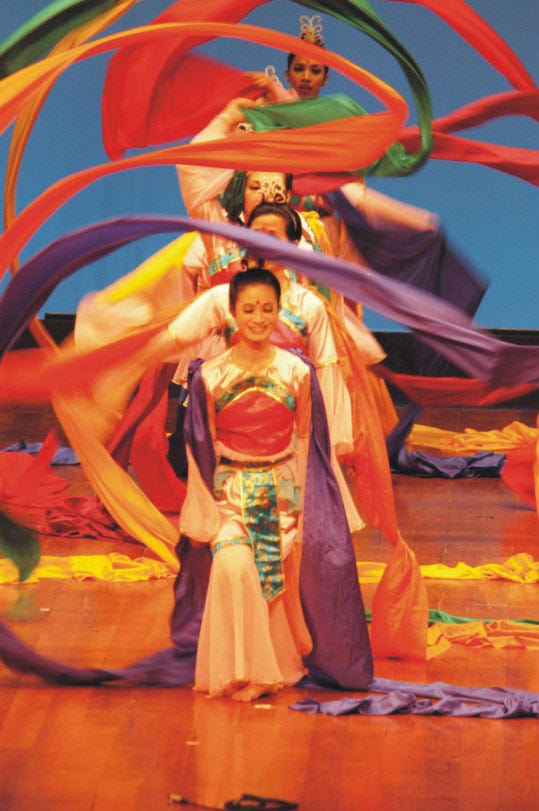
As a news reporter, it was plain old curiosity and fascination for the story that led me to sitting cross legged at dawn in parks across Sydney.
“Velly good,” old Chinese ladies with barely a word of English would beam whenever I got a hand movement right. Or they would sternly show me the right way if I got something wrong. I was always welcome.
For a physically disassociated person such as myself the exercises, slow moving though they are, seemed at first immensely complex and difficult. Even though they are exactly the same each time it took me weeks to accomplish them. I am still incapable of sitting in the Buddha or lotus position.
Turning Negative into Positive
The exercises are meant to focus on the energy lines in the body, to implant a Falun or energy wheel in the lower abdomen, to purify the body of negative energy or “dark matter”, to turn negative karma into white light through the transformation of pain into virtue, to link one’s body to the natural energy of the universe and to strengthen divine or supernatural powers.
Whatever they actually do, and whether celestial beings really do hover over practice sites around the world, as Master Li has maintained, it is certainly true that Falun Dafa is on to something.
After two hours in the park doing the exercises you walk away feeling as if you have been hit over the head with a cosmic hammer and are entering a hyper-real world.
Most adherents claim almost immediate health benefits. Coincidental or not, after a month of doing the exercises I too felt healthier, more organised, somehow more peaceful.
Chen Yonglin and a thousand Chinese spies
While Falun Gong had hardly been hiding, I first noticed them after the Chinese diplomat Chen Yonglin defected from the Sydney consulate in 2005, making claims that among the duties of a thousand Chinese spies in Australia was the close monitoring of Falun Gong practitioners.
Chen claimed the Chinese Consulate in Sydney had a blacklist of more than 800 Falun Gong practitioners. While many of these people were born in China, they would now have great difficulty returning there. To back his claims Chen provided several pieces of documentation, including a list of 300 names of practitioners sent to the Sydney and Melbourne consulates by the Chinese ambassador in Canberra.
Chen’s claims, and his conduct in defecting, had particular credibility for Falun Dafa practitioners because he was previously well known to them as someone who harassed and filmed them.
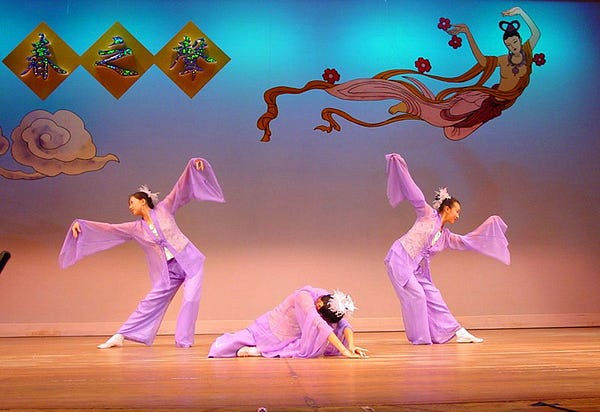
Demonstrations after Chen’s defection, a number organised by Falun Gong themselves, changed the face of refugee protests overnight.
For years bored reporters had covered these utterly predictable events out of some sense of duty. A scruffy ragbag of the Socialist Alliance and left wing unions, in the company of a few aggrieved immigrants from Iran or Iraq, would wave makeshift banners and pound on about the manifest evils of Immigration Minister’s Philip Ruddock and later Amanda Vanstone.
Overnight the character of these refugee demonstrations transformed.
Huge, neatly manufactured banners with Chinese symbols lined the perimeter of the events, earnest groups, including children, furiously waved neatly produced paper flags, and neatly turned out Chinese spoke passionately against the Communist regime in China, imploring the Australian government not to trade with this repressive regime.
The acting out of images of men and women being tortured and brainwashed was also a standard part of the campaigns.
Silent Invasion
With much of Australia’s mineral and energy wealth riding on the back of insatiable demand from Chine, the chances of the Australian government not trading with China were remote.
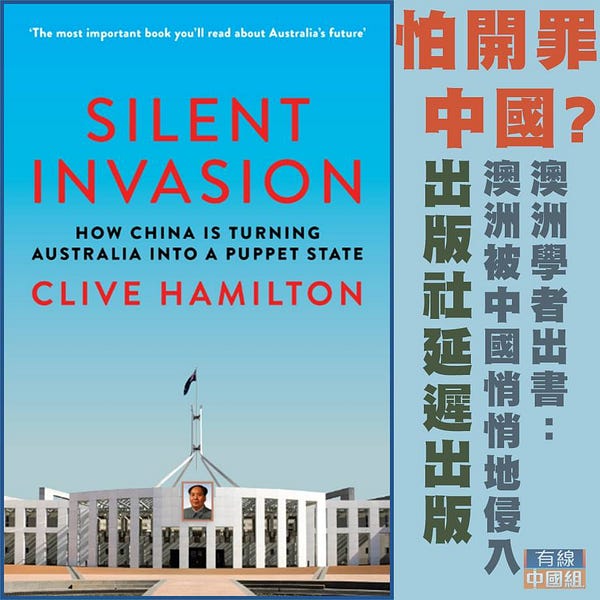
In the lead-up to the Beijing Olympics Falun Gong proved a major embarrassment to the Chinese government worldwide.
As The Australian’s Chinese correspondent Catherine Armitage reported, the Beijing Olympic press office were not even answering their phones in case it was a call from a Falun Gong devotee.
Anyone visiting a Chinese embassy almost anywhere in the world had leaflets or pictures of tortured women thrust at them or be confronted with silent and apparently peaceable people in the lotus position under Falun Dafa insignia.
If, as Chen claimed, there are a thousand spies monitoring the activities of Falun Gong in Australia, they have had a very easy time of it. The practice sites in public parks across Australia are advertised on the web. The telephone numbers of devotees are also up on the web. Public meetings and demonstrations are advertised. And with Truthfulness one of the platforms of their belief, if approached and asked if they are practitioners, they invariably say yes.
A loose organisational structure
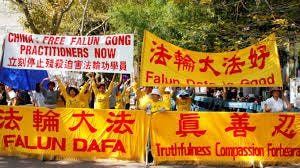
The group owes its phenomenal success partly to its loose organisational structure. It has none of the priests, churches or organisational infrastructure characteristic of the established faiths. It costs nothing to meditate and do exercises in the park.
The literature, music and exercise instructions can all be downloaded for free.
Any devotee, or disciple as they have come to be known, can start up a practice site without prior authorisation.
Broad Appeal
In my observation there are two broadly different types of Falun Dafa practitioners — those who follow the exercises for the physical and mental health benefits and those who use the exercises as a portal into the spiritual world.
Only those who practice both the exercises and cultivation of their character or “heart nature” can be disciples.
Construction manager Steve Olding, 50, was the only Falun Dafa practitioner I ever saw smoke a cigarette. He declared cheerfully that there were no rules.
He said he began going to Falun Gong while working in Hong Kong.
“For me it is a practical more than spiritual thing,” he says. “It clears my mind, gives me a positive outlook on life. They don’t force anything upon you. You can turn up for practice or not. You are never pressured into it in any shape or form. I have never been asked to donate a cent, yet I have been given so much.”
On the other hand John Andress, 58, a traffic controller on the Queensland Gold Coast, came as a spiritual seeker: “I spent many years following spiritual practices in the Indian systems. A friend of mine introduced me. I came for the spiritual aspects. I didn’t come for the health. Many people, particularly in China, came for health; because it had such an immediate impact. I came for the deeper aspects. It is beneficial on all levels; the physical is the one every one recognises, but it upgrades moral standards. It is based on very high principles. We live by Truth Compassion Forbearance.”
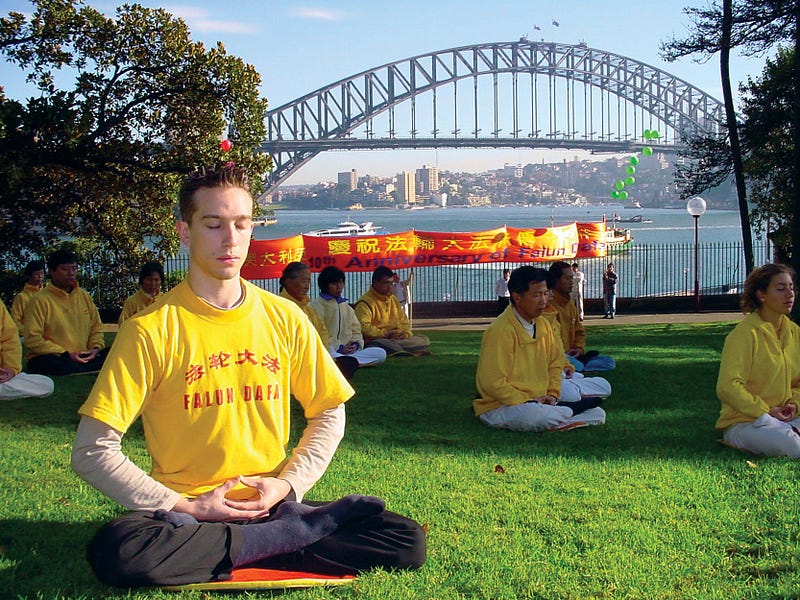
Tane Dalzell, 21, a house painter from Annandale, was also a seeker.
“From a young age I have always been interested in what life is all about,” he said. “I have always been intrigued by different practices from India, different yoga masters. And one day Falun Dafa came along and answered a lot of questions that other practices didn’t answer. I found out what life is all about and what I am here for. That is how I am a different person. A few years ago I was really lost. Now my head is sharp and clear, I don’t have any illnesses, I don’t have anything wrong with me.”
Thomas Dobson, 31, a language teacher, put it another way: “Some of the nicest people I have ever met in my life are in Falun Dafa. All I know is I haven’t been ill in years, haven’t even had to take an aspirin.”
These stubborn old girls
Many of the elderly Chinese seen in parks and outside consulates and embassies began the practice in Australia after Master Li visited Australia to give lectures, twice in 1996 and once in 1998. A number have family or friends who have suffered as a result of China’s oppression of their sect. For them Truthfulness involves telling the truth about what is happening in China.
At one point, interviewing Chinese women in a park with the help of an interpreter, I just started laughing. These stubborn old girls, well into their seventies, were the biggest threat to the Chinese Communist Party in its history!?
Well so it proved to be.
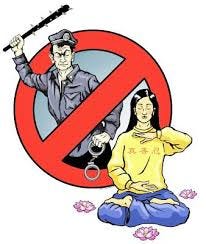
Here’s one example.
Guo Ying Zhang, 73, who spoke no English, was a farm labourer in one of the poorest provinces of China.
She said of her four children, two died of starvation. She herself nearly died in child birth. She came to Australia in the early 1990s as part of a family reunion.
She had never heard of Falun Gong until Master Li visited Australia in 1996.
“My own life was very hard, my health was in a very bad condition, I nearly died,” she said. “I am a very simple person, but I learn, I practice, now I am healthy. I don’t know if I would still be alive if it was not for Falun Gong.”
For Zhang and others like her, sitting outside the Chinese consulate all day protesting over the treatment of Falun Gong in China is the very least she can do.
Guo Jiu, 72, also in Australia as part of a family reunion, worked in an electronics factory in China.
She says she suffered numerous health problems, and shows the scars from a knee operation.
This is a woman who can now sit in the lotus position for hours.
“After I start the practice, I don’t need to go to doctors,” she says. At first she practised at home alone, but says she likes to come to the park. “I meet people who are very kind and who take care of me and I feel very nice,” she says. “I am very active with Falun Gong activity and I feel very happy with it.”
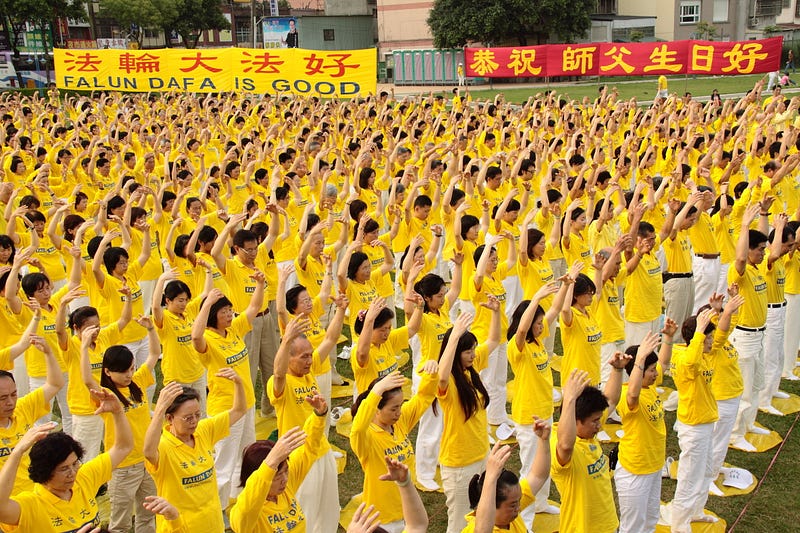
Melong Yie, 62, was born in Shanghai but was allocated to work for the Ministry of Culture in the harsh conditions along the Chinese Russian border. Like other civilian workers, she regularly wore army uniform to convince the Russians of the large number of Chinese soldiers. She taught Tai Chi sessions organised by the Workers Union.
“For me, before I started practice I focussed on daily life, myself, my children, my family. Now I understand that life is more, that life is precious. I am very active, I protest outside the consulate. People ask me why, do the American and Australian governments give me money? No one gives me money. It is from my heart. The minimum thing is: we should tell people the truth.”
You Cannot Escape The Truth
The Chinese consulate in Sydney was forced to move from Elizabeth Street, where the daily Falun Gong protests cluttered the streets and were a major embarrassment.
Yet despite its massive new multi-million dollar compound, with high walls and state of the art security, Chinese officials were not able to escape the Falun Dafa.
Being an enterprising mob, a practitioner promptly rented a vacant shop opposite and it has become the headquarters for daily protests. Jiamo Li, 67, who’s daughter in law rents the shop, said he is happy to endure the daily insults as he protests outside the consulate.

His heart breaks when he hears what has happened to so many practitioners, their families and their children in China. He says: “No matter whether it is hot or cold, I will stand here to clarify the truth.”
It is not just the elderly Chinese who are being attracted to Falun Dafa, with young professionals also in evidence.
Albert Lin. 34, a doctor in Fremantle in Western Australia, says considering they give out tens of thousands of flyers it clearly doesn’t appeal to everyone.
“For me I find it is a pure environment, where everyone wants to be a good person. It improves my mental and physical health. People find the principles of Truthfulness, Compassion and Forbearance echo with their own principles, and then they want to learn the practice. And also because some find it helps them relax, and their health improves.

“I am not surprised it appeals to Westerners. There are a lot of kind people. Their thinking is not as complicated as Chinese people. They have an inclination to goodness. We have some very good western practitioners.”
However much Falun Dafa focuses on individual self-improvement, its political potency is without doubt. Opposite the Chinese consulate in Sydney Falun Dafa signs suggest: “Saying goodbye for good to the Chinese Communist Party is realising hope for freedom and peace.” Another suggests getting rid of the CCP “is refusing brutality and returning to humanity”.
Kowtowing to the Chinese Government
Many Falun Dafa devotees re critical of the Australian government’s perceived kowtowing to the Chinese government.
This has included the issuing of certificates to curtail their activities in front of the Chinese Embassy in Canberra. This became the subject of appeal to the ACT Supreme Court.
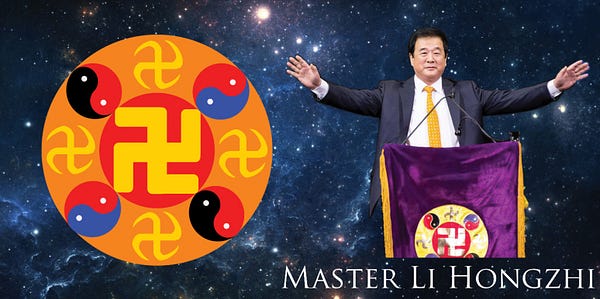
“Downer has bowed to the regime,” says Vina Lee, 42, who came to Australia in 1990.
“The Chinese Communist Party has no humanity, it is killing people. I am just a practitioner. If they did not persecute Falun Gong, I could never have imagined I would stand on the street and tell people what is happening in China.
“As practitioners we are not interested in power, fame. We focus on self improvement, to be a good person. I would never have campaigned against the Communist Party if they had not persecuted us.”
Ancient Traditions, Modern Technology
For a group whose traditions date back into Chinese antiquity Falun Dafa has shown a remarkably adept use of modern technology.
They are all over the web, with numerous websites dedicated to their cause. Little old ladies thrust CDs at you in the parks. Members have disrupted television broadcasts across China. Though it may be a crime to listen to it, a satellite once beamed sympathetic coverage across the country.
Nobody should think that just because the Falun Gong are humble they are poor.
The Epoch Times, introduced into Australia in the 1990s, rapidly became the most widely distributed Chinese English language newspaper in the world.
While the owners remain strictly anonymous, some are rumoured to be Falun Gong devotees.
While it is a general interest newspaper, it has covered the Falun Gong story with thoroughness and sympathy. It recently published “The Nine Commentaries”, a hugely influential critique of the CCP within the Chinese world.
They once claimed more than two million resignations from the communist party as a result of their campaigns.
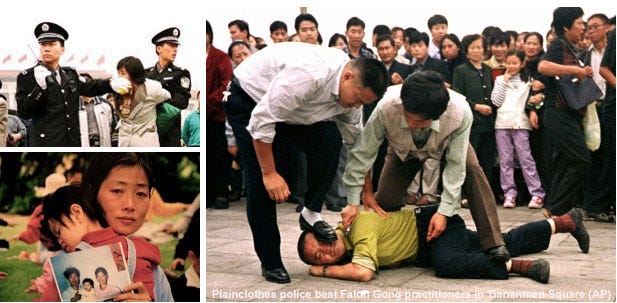
An Australian spokeswoman for the Epoch Times Caroline Dobson said they were an independent media outlet and were an entirely separate entity to Falun Dafa.
“The reason that we cover Falun Dafa is because we have a multilingual staff, unique contacts within the community and for anyone interested in China it is such a big story. It affects a large number of people.”
The press office of the Chinese Embassy referred inquiries to the head press officer, Mrs Ou Boqian, who did not answer the number provided by the press office.
Following the spectacular defection of Chen Yonglin the story of Falun Gong in Australia kept popping up in unusual ways.
In the UK and Canada, just as in Australia, there were sorrowful stories of Chinese practitioners being forcibly repatriated back to China and a very uncertain future.
Activities in Australia included a conference titled A Great Wall of Courage, an anti-torture exhibition and a candlelight vigil to mark the anniversary of the Chinese crackdown.
Villawood
In another incident in Australia, Falun Gong was forced to deny that any of its members were involved in an episode of self-harm amongst Chinese inmates at the immigration centre of Villawood. They pointed out, not for the first time, that their beliefs are totally opposed to self-harm or killing of any kind.

And in yet another incident from the early part of the millenium, Sydney’s University of Technology refused to remove mention of a Falun Dafa meditation club from its website. As a result, the UTS website was blocked in China.
Much has changed since then. Substantial Chinese Government funding of the university’s Australia-Chinese Relationship Relations Institute and close relationships between the UTS and the Chinese government has provoked condemnation and claims the institution’s independence has been compromised.
At the time the stance against Chinese bullying was expected to lower the number of incoming Chinese students, substantially affecting university revenue.
Paying the Price for Hypocrisy
UTS Vice Chancellor Ross Milbourne said an increase in undergraduate student fees was largely due to the university taking a principled stand in keeping Falun Dafa content on the site.
Equally odd, a San Francisco politician of Chinese origin withdrew her support for an art show, the “National Treasures of China”, after it was revealed that the owner of the valuable collection, Mei-Ling Dai, described by the local press as the matriarch of an aristocratic Chinese-Australian family, practices Falun Gong.
As the Beijing Olympics and 2008 approached, stories of Falun Dafa proliferated.
To this day, senior Chinese officials travelling abroad face Falun Gong demonstrations. Around the world anyone who goes to a Chinese embassy or a Chinese consulate to get a visa may have a Falun Dafa leaflet thrust at them.
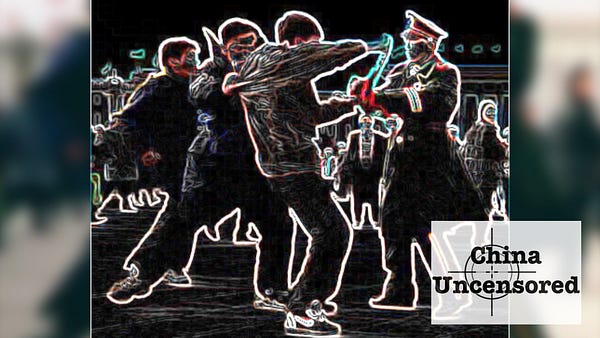
I used to shrug when people asked me if I would continue with the exercises after I finished writing the story. But I have, in a not very complete or disciplined fashion.
The practice may or may not be a fast track to enlightenment, but it does have immediate psychological and physical benefits.
Practitioners believe that a collective focusing of thought has the power to transform the world.
Perhaps here, at what so many truly believe are The End of Days, the Falun Gong’s belief in a magical future and the possibility of earthwide spiritual transformation really could prove an antidote to chaos.

Author’s note: When I wrote the original of this story in 2006 I thought Falun Dafa was readying to become one of the world’s major religions.
It had all the elements, a major text, devoted followers, a rapid rate of conversion, a history of persecution, the promise of enlightenment. But it never happened.
In Australia the group continues to face persecution.
There are 1.1 million ethnic Chinese in Australia, an estimated 80% of whom are loyal to Beijing, and therefore hostile to Falun Gong.
Images courtesy of Falun Dafa.
John Stapleton worked as a mainstream journalist on two of Australia’s leading newspapers, The Sydney Morning Herald and The Australian, for more than twenty years. A collection of his journalism is being constructed here.
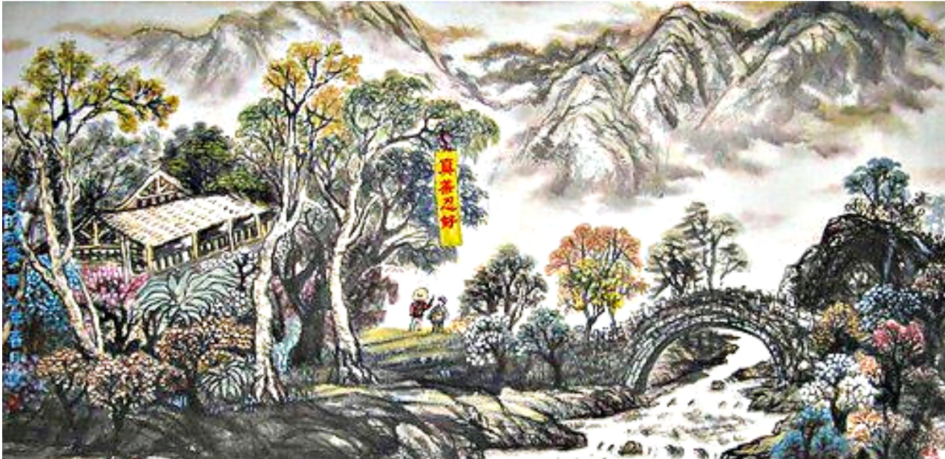
1 Pingback